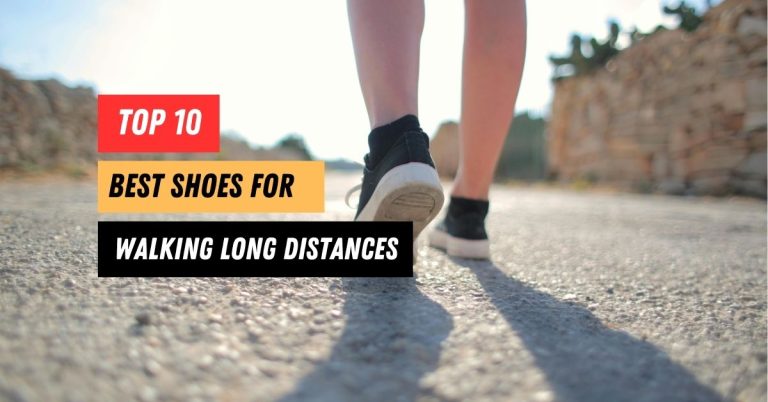10 Best Shoes for Painful Arches
Finding the best shoes for painful arches is essential for anyone who struggles with foot discomfort or arch pain. Wearing the right footwear can make a significant difference in daily comfort, safety, and performance, especially for people who are active or spend long hours on their feet. Properly designed shoes can provide essential support, absorb shock, and help align the foot and body, reducing the risk of further pain or injury. Without the right footwear, individuals may experience worsening discomfort and even develop additional foot problems. This article explores why choosing supportive shoes for painful arches is important and provides practical guidance on what features to look for, what to avoid, and how to make a smart purchase.
Best Shoes for Painful Arches
1. Brooks Ghost 15
The Brooks Ghost 15 is a well-known running shoe that consistently ranks among the best for people with painful arches. One of its key strengths is the use of DNA Loft v2 cushioning, which provides a plush, responsive ride without sacrificing durability or support. This shoe is engineered to offer neutral support, which makes it versatile for different foot shapes and suitable for both casual walkers and avid runners alike.
What stands out about the Ghost 15 is the seamless transition from heel to toe. The midsole design helps distribute impact evenly, reducing pressure on sensitive arches. The segmented crash pad system absorbs shock efficiently, further minimizing foot fatigue during long periods of activity. The shoe’s breathable engineered mesh upper adapts to foot movements while maintaining structure.
Fit is another major advantage. Brooks offers the Ghost 15 in multiple widths, ensuring a comfortable fit for narrow, regular, or wide feet. The toe box is roomy, allowing for natural toe splay, which is essential for those who experience discomfort from cramped toes. The overall build of the shoe feels sturdy yet lightweight, so users can enjoy daily wear without heaviness.
Arch support in the Ghost 15 is subtle but effective. The shoe isn’t aggressively corrective, which means it works well for those who need moderate, consistent support rather than rigid control. The removable insole allows for the use of custom orthotics, enhancing its suitability for a range of arch issues. Overall, this shoe balances softness and stability, making it a top choice for anyone seeking relief from painful arches.
Pros
-
Excellent cushioning and shock absorption
-
Available in multiple widths
-
Removable insole for orthotics
-
Breathable and lightweight construction
Cons
-
Not ideal for severe overpronators
-
Price point is on the higher side
2. ASICS Gel-Kayano 30
The ASICS Gel-Kayano 30 is highly regarded among stability running shoes and offers targeted features that benefit those with painful arches. It is equipped with ASICS’ signature Gel technology in both the heel and forefoot, creating an ultra-cushioned landing that reduces the shock transferred to sensitive arches. The shoe’s FlyteFoam Blast+ Eco midsole delivers springy energy return while maintaining a soft, supportive feel.
This model is built with a robust support system. The Kayano’s 4D Guidance System offers dynamic stability, which helps control excessive movement and supports the natural gait cycle. This is especially useful for people who overpronate or have collapsing arches. The heel counter is firm yet comfortable, providing excellent lockdown and alignment for the entire foot.
One of the highlights of the Gel-Kayano 30 is its secure, adaptive upper. The mesh upper provides both structure and ventilation, ensuring feet stay cool and comfortable even during long runs or walks. The midfoot panel adapts to foot shape, enhancing overall support and preventing unwanted slippage inside the shoe.
Comfort is evident right out of the box, with a plush interior and seamless lining that reduces the risk of irritation. The shoe’s design accommodates both wide and standard feet, and the removable Ortholite sockliner allows wearers to insert custom arch supports as needed. While designed for runners, the shoe’s support features translate perfectly to everyday wear for anyone with arch pain.
The Gel-Kayano 30 is a standout for its combination of stability, cushioning, and reliable arch support. Its construction prioritizes long-term comfort and injury prevention, making it an excellent option for those struggling with persistent foot discomfort.
Pros
-
Superior cushioning with Gel and FlyteFoam technology
-
Dynamic stability for overpronation
-
Highly breathable and adaptive upper
-
Accommodates custom orthotics
Cons
-
Slightly heavier than typical trainers
-
Premium price tag
3. Hoka One One Bondi 8
The Hoka One One Bondi 8 is celebrated for its maximum cushioning and plush underfoot feel, making it an excellent shoe for individuals with painful arches. Its full-length EVA midsole offers an ultra-soft ride while maintaining a surprising level of support and stability. The Bondi 8’s unique rocker sole promotes a smooth transition from heel to toe, easing pressure on the arch and encouraging a natural walking motion.
Comfort is at the core of this design. The padded collar and tongue, combined with an engineered mesh upper, ensure a secure yet flexible fit. This mesh material is both lightweight and highly breathable, preventing heat buildup during extended wear. The wide platform enhances stability, making the Bondi 8 a solid choice for those who need extra confidence with every step.
Arch support is subtly integrated into the shoe’s midsole geometry. While not as pronounced as some orthotic-style shoes, the Bondi 8 still provides enough support for most users with moderate arch pain. The oversized midsole absorbs shock exceptionally well, which helps reduce pain and fatigue, especially during long walks or shifts on hard surfaces.
Another advantage of the Bondi 8 is its versatility. It is equally suitable for walking, running, or standing for prolonged periods. The shoe accommodates wider feet and offers a removable insole for those who need to use their own orthotics. The durable rubber outsole provides reliable traction across a variety of surfaces.
With its plush comfort, reliable support, and adaptable fit, the Hoka Bondi 8 stands out as a leading solution for anyone seeking effective relief from arch pain. Its design caters to both comfort seekers and those with specific foot health needs.
Pros
-
Maximum cushioning and shock absorption
-
Rocker sole eases pressure on the arch
-
Accommodates orthotics
-
Stable, wide base for added confidence
Cons
-
Bulky appearance may not appeal to everyone
-
Price is relatively high
4. New Balance 990v6
The New Balance 990v6 is an iconic sneaker recognized for its blend of classic style, premium materials, and strong support features for painful arches. The shoe incorporates a dual-density foam midsole that delivers firm arch support while still offering ample cushioning. ENCAP midsole technology provides both structure and flexibility, making the 990v6 suitable for varied activities from walking to light jogging.
Support is a standout feature here. The shoe’s design includes a reinforced heel counter and medial post to prevent excessive inward rolling of the foot, which is common in those with arch pain or flat feet. The stable platform helps maintain proper alignment, reducing stress on the arch throughout the gait cycle. The fit is customizable thanks to available width options.
The upper is crafted from a combination of pigskin suede and breathable mesh, offering both durability and ventilation. This blend gives the 990v6 a premium feel and ensures the shoe can withstand daily wear and tear. The plush lining and padded tongue add to the overall comfort, reducing the risk of blisters and hotspots.
Arch support is both noticeable and comfortable, providing relief without feeling overly rigid. The removable insole allows for the addition of custom inserts, which is ideal for those requiring extra support. The 990v6’s rubber outsole is designed for durability and offers solid traction on various surfaces.
A long-standing favorite among podiatrists and consumers alike, the New Balance 990v6 is a smart investment for those prioritizing comfort, support, and durability. Its combination of traditional styling and advanced support features makes it a top choice for alleviating painful arches.
Pros
-
Strong arch and heel support
-
Premium materials and durable construction
-
Available in multiple widths
-
Classic, versatile style
Cons
-
Heavier than some athletic shoes
-
Higher price due to quality materials
5. Saucony Guide 17
The Saucony Guide 17 is engineered for stability and comfort, making it a strong candidate for anyone with painful arches. The shoe features the PWRRUN+ cushioning system, providing a soft yet responsive feel that absorbs shock and minimizes foot fatigue. Its updated Hollow-Tech guidance frame ensures the foot stays aligned without feeling restrictive, which is especially important for individuals needing arch support.
A notable aspect of the Guide 17 is its FORMFIT upper, designed to hug the foot securely while allowing flexibility and airflow. This adaptive fit reduces the chance of irritation and supports the arch by preventing unwanted movement within the shoe. The heel counter is both supportive and well-padded, enhancing stability during walks or runs.
Arch support is delivered through the shoe’s geometry and cushioning. The Guide 17 offers a gentle but effective lift in the midfoot, providing relief for those with moderate to significant arch pain. The shoe’s moderate drop encourages a natural gait, which further helps alleviate stress on the arches.
Durability is another strength of this model. The rubber outsole is built for long-lasting wear and provides solid traction on different surfaces. The overall weight of the shoe remains relatively light, which is appreciated by those who do not want a bulky or heavy option.
With a reputation for consistent performance, the Saucony Guide 17 is well-suited for both everyday use and athletic activities. Its blend of structured support, cushioning, and adaptable fit makes it a reliable solution for people struggling with painful arches.
Pros
-
Effective arch support with gentle guidance
-
Lightweight yet durable construction
-
Breathable, adaptive upper
-
PWRRUN+ cushioning for comfort
Cons
-
May feel firm for those preferring ultra-soft shoes
-
Some users find the fit a bit narrow
6. OOFOS OOmg Low Shoe
The OOFOS OOmg Low Shoe is a standout option for anyone with painful arches who values both comfort and recovery. Unlike most athletic shoes, this model is built with proprietary OOfoam technology, which absorbs 37% more impact than traditional foams. This makes every step feel cushioned and supportive, particularly beneficial for those with arch discomfort after long periods of standing or activity.
One unique feature is the shoe’s flexible, seamless upper. Made from breathable, stretchy fabric, it accommodates different foot shapes and reduces the risk of pressure points or irritation. The shoe is exceptionally lightweight, which helps reduce fatigue and encourages regular wear, even during post-workout recovery or daily errands.
The contoured footbed is the true star here. OOFOS designs their shoes with a deep heel cup and pronounced arch support, cradling the foot in a natural, pain-relieving position. This encourages proper alignment and offloads pressure from sensitive areas, making it ideal for those who need a break from stiff, structured shoes.
Another advantage is the shoe’s machine-washable design, which is great for keeping your footwear fresh with minimal effort. The slip-on style adds to its convenience, making it perfect for people with mobility challenges or those seeking an easy everyday option.
While the OOFOS OOmg Low Shoe is not designed for intense athletic use, it excels as a recovery or casual shoe. Its exceptional cushioning, pronounced arch support, and lightweight design make it a smart investment for ongoing relief from arch pain.
Pros
-
Exceptional impact absorption with OOfoam
-
Deep arch and heel support
-
Lightweight and machine-washable
-
Easy slip-on design
Cons
-
Not suitable for running or high-impact sports
-
Style may be too casual for formal settings
7. Vionic Walker Classic
The Vionic Walker Classic is a podiatrist-designed shoe that delivers serious support for those struggling with painful arches. It features a biomechanical orthotic insole with deep heel cup and substantial arch support, making it one of the best choices for managing flat feet or plantar fasciitis. The insole helps stabilize the foot, reducing overpronation and relieving pressure from the arches.
Durability is a key benefit of this model. The upper is crafted from high-quality, water-resistant leather, making it suitable for a variety of weather conditions. The outsole is made from durable rubber and features a patterned tread for reliable traction on most surfaces, including wet pavement.
Comfort is present throughout. The shoe’s plush padding, shock-absorbing EVA midsole, and padded collar all contribute to a secure, comfortable fit. Breathable mesh panels in the upper help with airflow, keeping feet cool during extended wear.
Adjustability is another plus. The Walker Classic features a traditional lace-up design, allowing users to customize the fit for optimal support. This makes it particularly suitable for those with orthotics or custom insoles, as the insole is removable.
Overall, the Vionic Walker Classic is built for those who need all-day support and want a shoe that’s as practical as it is comfortable. Its blend of medical-grade support, durable construction, and comfort-focused design makes it a trusted choice for anyone dealing with persistent arch pain.
Pros
-
Podiatrist-designed with deep arch support
-
Durable, water-resistant leather upper
-
Accommodates custom orthotics
-
Superior traction and stability
Cons
-
Heavier than athletic-style shoes
-
Break-in period may be required
8. Altra Torin 7
The Altra Torin 7 stands out in the market for its balanced cushioning and foot-shaped design, which supports the natural alignment of the foot and alleviates painful arches. One of the shoe’s main features is the Balanced Cushioning platform, which positions the heel and forefoot at an equal distance from the ground. This encourages a natural stride and helps distribute pressure evenly, reducing strain on the arches.
The Torin 7 uses Altra’s signature FootShape toe box, giving toes ample room to spread out. This enhances stability, prevents crowding, and promotes a healthier foot posture, which can be especially beneficial for those with arch discomfort. The upper is constructed from engineered mesh that is both lightweight and breathable.
Comfort is further enhanced by the EGO MAX midsole foam, which delivers a responsive yet plush ride. This helps absorb shock during impact, providing lasting relief during walks or runs. The shoe is also moderately lightweight, making it suitable for a variety of activities.
Arch support in the Torin 7 is subtle but present. While it may not have as pronounced an arch as some orthotic shoes, the overall shape and support system help those with mild to moderate arch pain. The insole is removable, giving users the option to insert custom orthotics if needed.
With its zero-drop design, roomy fit, and reliable cushioning, the Altra Torin 7 is an excellent choice for anyone seeking a natural, supportive feel. It’s ideal for those who want both relief from arch pain and the freedom of natural movement.
Pros
-
Balanced Cushioning promotes natural alignment
-
Spacious FootShape toe box
-
Lightweight and breathable
-
Removable insole for orthotics
Cons
-
Arch support may be too subtle for severe pain
-
Zero-drop design requires adjustment for some users
9. Orthofeet Coral Stretch Knit
The Orthofeet Coral Stretch Knit is specifically engineered for people with foot pain, including painful arches, making it a top contender in comfort footwear. The shoe features an orthotic insole with anatomical arch support and a deep heel seat, designed to align the foot and alleviate pressure on the arch. This helps minimize pain not only in the feet but also up the kinetic chain knees, hips, and lower back.
The stretchable knit upper is a major advantage. It adapts to various foot shapes and widths, reducing the risk of pressure points and accommodating issues like bunions or swelling. The interior is lined with extra foam padding and seam-free fabric, further preventing irritation.
One of the shoe’s highlights is the lightweight, ergonomic sole. The air-cushioned design provides superior shock absorption and helps propel the foot forward with each step, reducing fatigue during long periods of standing or walking. The wide toe box adds to overall comfort and stability.
Orthofeet’s Coral also includes an adjustable insole system, allowing wearers to customize the support and depth to their needs. This versatility is especially valuable for those with complex foot issues or who use custom orthotics. The shoe is available in multiple widths to accommodate different foot types.
The Coral Stretch Knit excels in turning medical-grade support into everyday comfort. For those with painful arches, it offers a rare blend of cushioning, stability, and customization, making it a worthwhile investment for long-term relief.
Pros
-
Orthotic-grade arch support and deep heel cup
-
Stretchable, seamless upper for custom fit
-
Accommodates orthotics and custom insoles
-
Lightweight, ergonomic sole with air cushioning
Cons
-
Style is more medical than sporty
-
Higher price than many mainstream sneakers
10. Nike Air Zoom Structure 25
Nike’s Air Zoom Structure 25 is a high-performance running shoe with built-in stability and responsive cushioning, making it a strong pick for individuals dealing with painful arches. Its combination of a supportive midsole and Zoom Air cushioning unit in the forefoot delivers both comfort and bounce. The result is a shoe that lessens impact on the arch while energizing each step.
The midsole’s firmness in the arch area provides subtle correction, promoting better alignment and preventing overpronation. The structure of the shoe is reinforced with a durable, engineered mesh upper that holds the foot securely while allowing for airflow. The shoe also features a wide base and a well-constructed heel counter for added stability.
Comfort is further boosted by the shoe’s soft, padded collar and responsive foam in the heel. These features help absorb shock and reduce foot fatigue, even during longer workouts or walks. Nike’s attention to detail in fit ensures the shoe wraps comfortably around the foot without being restrictive.
One of the Air Zoom Structure 25’s strengths is its versatility. While designed for running, its supportive features make it suitable for everyday use for anyone with arch pain. The shoe is lightweight, flexible, and adapts well to different foot shapes.
The outsole is designed for traction on a variety of surfaces, making it practical for both gym and outdoor use. With its blend of stability, responsive cushioning, and reliable Nike craftsmanship, the Air Zoom Structure 25 is a go-to for relief from painful arches.
Pros
-
Responsive Zoom Air cushioning
-
Firm arch support for stability
-
Breathable, engineered mesh upper
-
Versatile for running or daily wear
Cons
-
May require a brief break-in period
-
Slightly narrow fit for wide feet
Buyer’s Guide
1. Prioritize Arch Support
When searching for shoes to ease painful arches, start by evaluating the arch support. Look for shoes with anatomically shaped footbeds or insoles specifically designed to support the natural curve of the arch. Some shoes feature removable insoles, allowing you to use custom orthotics if prescribed. Quality arch support helps distribute pressure evenly across the foot, reducing strain and preventing pain from worsening.
2. Focus on Cushioning
Ample cushioning is vital for absorbing shock, especially if you walk or stand on hard surfaces. Shoes with extra padding in the midsole and heel can reduce the impact on your arches and offer day-long comfort. Materials like EVA foam, gel inserts, or air-cushioned soles are particularly effective for sensitive feet.
3. Check the Shoe’s Structure
A good shoe for painful arches should have a firm yet flexible sole. Flexibility in the forefoot helps your foot move naturally, while a firm midsole prevents excessive bending that could aggravate pain. The shoe should also have a supportive heel counter to keep your foot in proper alignment and prevent overpronation, a common issue for those with arch discomfort.
4. Choose the Right Fit
Shoes that are too tight or too loose can exacerbate arch pain. Always try on shoes at the end of the day when your feet are slightly swollen, and wear the type of socks you plan to use. Look for shoes with a spacious toe box to prevent cramping and allow natural toe splay. Adjustable features like laces or straps also help achieve a secure fit.
5. Select Durable, Breathable Materials
Durability is key for shoes that will provide lasting support. Look for high-quality leather, engineered mesh, or knit uppers that offer both structure and breathability. Moisture-wicking linings help keep your feet dry and comfortable, which is crucial for foot health.
6. Don’t Overlook Grip and Outsole Design
Slippery shoes can lead to instability and injury, especially if your arches are already sensitive. Seek shoes with slip-resistant outsoles and patterned treads to enhance grip on various surfaces. This ensures you stay secure whether indoors or outside.
7. What to Avoid
Steer clear of flimsy, unsupportive shoes such as ballet flats, flip-flops, or worn-out sneakers, as they can worsen arch pain. Avoid shoes with excessively high heels or completely flat soles, both of which can disrupt the natural arch mechanics. Additionally, beware of cheap materials that wear down quickly and lose their support.
8. Consider Your Activity Level
Match your shoes to your lifestyle and activity needs. If you’re often walking or running, invest in athletic shoes with enhanced shock absorption and motion control. For work or casual use, choose models known for comfort and all-day support. Always replace shoes when you notice signs of wear, such as flattened insoles or uneven soles, to ensure ongoing relief from arch pain.
FAQ
1. What causes painful arches and how can shoes help?
Painful arches can result from flat feet, high arches, plantar fasciitis, or standing for long periods. Shoes with proper arch support and cushioning help distribute weight evenly, reduce pressure, and stabilize the foot, alleviating discomfort and preventing further issues.
2. Are orthotic insoles necessary for painful arches?
Orthotic insoles can be very beneficial, especially if over-the-counter shoes do not offer enough support. Many people with chronic arch pain find relief using custom or high-quality off-the-shelf insoles. Look for shoes with removable footbeds to accommodate orthotics.
3. How do I know if a shoe has good arch support?
A shoe with good arch support will feel supportive under the midfoot and not collapse when you press on the arch area. Test the shoe by pressing on the insole and bending the sole. The midsection should remain firm but not rigid, indicating proper support.
4. Can athletic shoes be worn for everyday arch pain?
Yes, many athletic shoes are designed with advanced support, cushioning, and shock absorption. Walking or running shoes from reputable brands can be excellent for everyday wear if you have painful arches, provided they fit well and match your activity level.
5. How often should I replace shoes for painful arches?
Replace your shoes every 300-500 miles if used for walking or running, or when you notice the insoles are compressed, the outsole is worn, or the shoe no longer feels supportive. Wearing worn-out shoes can worsen arch pain and lead to other foot problems.
6. Are sandals or open shoes suitable for painful arches?
Some sandals are designed with built-in arch support and contoured footbeds, making them suitable for people with painful arches. However, avoid completely flat or unsupportive sandals. Look for brands known for orthopedic designs and always test the fit and support before purchasing.
7. What features should I avoid in shoes for painful arches?
Avoid shoes with thin, unsupportive soles, minimal arch support, narrow toe boxes, or materials that lack durability. High heels and completely flat shoes can both increase arch strain and should be minimized. Focus on stability, cushioning, and ergonomic design for the best relief.
Conclusion
Choosing the right shoes for painful arches is vital for comfort, safety, and long-term foot health. The best options offer targeted arch support, proper cushioning, and a fit tailored to your unique needs. Prioritizing quality footwear can ease discomfort, prevent further injury, and support your active lifestyle every day.







